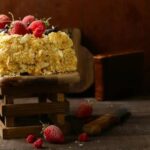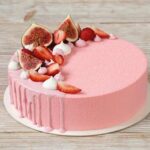Are you interested in learning how to practice decorating cakes? Whether you are a beginner or looking to improve your skills, practicing cake decorating is crucial for honing your techniques and mastering the art of creating beautiful and delicious cakes. In this article, we will explore the importance of regular practice for beginners and provide valuable tips and resources to help you get started on your cake decorating journey.
Practicing cake decorating is essential for beginners as it allows you to familiarize yourself with the necessary tools, equipment, and techniques needed to create stunning designs. By dedicating time to regular practice, you can gain confidence in handling piping bags, working with fondant, and mastering various icing techniques. This introductory section will delve into the significance of practicing cake decorating for beginners and highlight the benefits of honing your skills through consistent effort.
Throughout this article, we will cover everything from essential tools and equipment, basic techniques, ingredient selection, practice projects for beginners, advanced practice techniques, troubleshooting common issues, and tips for practicing safely and efficiently. We believe that by understanding the fundamentals of cake decorating and engaging in deliberate practice, beginners can develop their skills and eventually create professional-looking cakes. Let’s embark on this exciting journey together as we delve into the world of cake decorating practice.
Essential Tools and Equipment
When it comes to practicing cake decorating, having the right tools and equipment is essential. Without the proper supplies, it can be challenging to hone your skills and create beautiful designs. Here, we will discuss the essential tools and equipment needed for successful cake decorating practice.
Piping Bags and Tips
One of the most important tools for cake decorating is a set of piping bags and tips. These allow you to create intricate designs with frosting, such as borders, flowers, and writing. It’s essential to have a variety of tips in different sizes and shapes to achieve different effects.
Offset Spatula
An offset spatula is a must-have tool for smoothing icing onto cakes and creating clean lines. It allows for precision and control when working with frosting, making it easier to achieve professional-looking results.
Rolling Pin
For fondant cake decorating practice, a rolling pin is necessary to roll out the fondant into smooth, even sheets. Look for a non-stick rolling pin specifically designed for working with fondant to make the process easier.
In addition to these specific tools, other essential equipment includes a turntable for easily rotating cakes while working on them, a cake leveler for creating even layers, and an assortment of food coloring gels or powders for tinting icing and fondant. By investing in quality tools and equipment, you’ll be better equipped to practice cake decorating with success.
Understanding Basic Techniques
Before diving into advanced cake decorating techniques, it’s crucial for beginners to understand the fundamental methods of cake decoration. Piping, icing, and fondant handling are essential skills that form the building blocks of cake decorating.
Piping involves using a pastry bag or piping tool to create decorative designs on the surface of a cake with icing. This can range from simple lines and borders to intricate flowers and lettering. It’s important to practice different pressure and consistency when piping to achieve various designs.
Icing is another key technique in cake decorating, as it serves as the base for many decorative elements. Understanding how to properly ice a cake, whether with buttercream or royal icing, is crucial for achieving a smooth and professional finish. Practicing different icing textures and application methods will help beginners perfect this skill.
Fondant handling is also a fundamental aspect of cake decorating, particularly for creating detailed decorations and covering cakes with a smooth finish. Kneading, rolling, and draping fondant requires practice to master, but it opens up numerous creative possibilities for decorators. Learning how to handle fondant properly will give beginners the confidence to tackle more elaborate cake designs.
| Fundamental Techniques | Examples |
|---|---|
| Piping | Simple lines, intricate flowers |
| Icing Application | Buttercream vs Royal Icing techniques |
| Fondant Handling | Kneading, rolling, draping fondant |
Selecting the Right Ingredients
When it comes to practicing cake decorating, selecting the right ingredients is essential for achieving the best results. The type and quality of icing and fondant used can significantly impact the outcome of your cake decorations. Here are some tips for choosing the best ingredients for practicing cake decorating.
Choosing the Right Icing
One of the most crucial aspects of cake decorating is selecting the right type of icing. Buttercream, royal icing, and fondant are popular choices for decorators. For beginners, buttercream is often recommended due to its versatility and forgiving nature.
It is easy to work with and can be used for various piping techniques and designs. Royal icing, on the other hand, is excellent for intricate designs and detailing but requires a bit more skill to handle. Fondant is a smooth, pliable icing that provides a clean canvas for decorations but may require more practice to master.
Picking the Ideal Fondant
When it comes to fondant, there are different types available in the market, such as rolled fondant and modeling chocolate. Rolled fondant is commonly used for covering cakes and creating smooth finishes, while modeling chocolate is perfect for sculpting 3D decorations or figures. When practicing cake decorating, beginners should choose a type of fondant that suits their project goals and skill level. It’s essential to consider the texture, elasticity, taste, and color options when selecting fondant for practice projects.
Quality Matters
Regardless of the type of icing or fondant you choose to practice with, investing in quality ingredients will make a noticeable difference in your finished creations. Higher quality ingredients often result in better flavors, textures, and overall aesthetics. While it may be tempting to opt for lower-cost options when starting out, using high-quality ingredients from the beginning will set a solid foundation for your skills as you continue to practice decorating cakes.
In summary, choosing the right ingredients for practicing cake decorating – including ideal types of icing and fondant – plays a significant role in honing your skills as a decorator. By understanding the characteristics of different icings and fondants and selecting high-quality ingredients from the start, you can set yourself up for success as you learn how to practice decorating cakes effectively.
Practice Projects for Beginners
For beginners, practice is essential when it comes to mastering the art of cake decorating. This section will focus on providing step-by-step tutorials for simple cake decorating projects, specifically aimed at those who are new to the craft. Whether it’s basic piping designs or beginner-friendly fondant decorations, these projects will serve as a solid foundation for honing your skills and boosting your confidence in cake decorating.
One of the best ways to practice cake decorating is by starting with simple designs and techniques. For example, you can begin with classic piping designs such as dots, stars, or rosettes using different types of tips for various effects.
As you become more comfortable with piping, you can then move on to more intricate designs and patterns. Similarly, experimenting with fondant can also provide an opportunity for beginners to get hands-on experience with shaping and molding the material into basic shapes and figures.
Another key aspect of practicing cake decorating is following structured tutorials that break down each step of the process. Beginner-friendly tutorials offer clear instructions and visuals that guide you through the entire decorating project. This not only helps in understanding the techniques involved but also aids in building a strong foundation in cake decorating skills. Additionally, these tutorials can inspire creativity and provide a sense of accomplishment upon successfully completing each project.
Finally, consistent practice plays a crucial role in improving your cake decorating abilities over time. Through regular repetition of basic projects and techniques, beginners can develop muscle memory and enhance their precision when working with icing, piping bags, and fondant tools. It’s important to remember that patience is key when learning how to practice decorating cakes – progress may be gradual at first, but dedication and perseverance will yield significant improvements in your skills.
| Practice Projects for Beginners | Step-by-Step Tutorials for Simple Cake Decorating Projects |
|---|---|
| Simple Designs | Dots, Stars, Rosettes |
| Structured Tutorials | Clear Instructions and Visuals |
| Consistent Practice | Development of Muscle Memory and Precision |
Advanced Practice Techniques
Once you have mastered the basic techniques of cake decorating, it’s time to take your skills to the next level with more advanced practice techniques. With dedication and practice, you can become a pro at creating intricate piping designs and constructing multi-tiered masterpieces. Here are some advanced techniques to help you elevate your cake decorating game:
- Advanced Piping Designs: Experiment with different piping tips and techniques to create intricate designs such as basketweave, lace patterns, rosettes, and ruffles. Practice on parchment paper or wax paper before trying it on an actual cake to perfect your technique.
- Multi-Tiered Cake Construction: Learn how to properly stack and support multiple tiers using dowels or support rods. Practice leveling each tier and ensuring that they are securely stacked to create a stable, visually stunning masterpiece.
- Skillful Fondant Handling: Take your fondant handling skills up a notch by practicing advanced techniques like draping fondant over irregular shapes, creating realistic textures, and sculpting detailed figurines or flowers.
As you venture into more advanced cake decorating techniques, remember that patience and practice are key. Don’t be discouraged by initial failures; instead, use them as learning experiences to improve your skills. The more you practice these advanced techniques, the more confident and proficient you will become in creating professional-looking cakes.
In addition to honing your technical skills, consider seeking inspiration from professional cake decorators through books, online tutorials, or workshops. By continuously challenging yourself with new designs and styles, you’ll expand your creativity and develop a unique signature style in cake decorating.
Remember that the journey towards mastering advanced cake decorating techniques is ongoing. Be open to learning from mistakes and celebrate small victories along the way. Keep refining your skills with regular practice sessions dedicated to perfecting these advanced techniques.
Ultimately, the satisfaction of seeing your hard work pay off in beautifully decorated cakes will make the effort well worth it. With dedication and perseverance, you’ll soon gain recognition for your impressive cake decorating abilities.
Troubleshooting Common Issues
When it comes to practicing the art of cake decorating, it’s common to encounter issues with icing consistency and fondant cracking. These problems can be frustrating for beginners, but understanding how to troubleshoot these common issues is an essential part of the learning process. Icing consistency is one of the most crucial elements in cake decorating, as it directly affects the outcome of your designs.
If the icing is too stiff, it can make piping difficult and result in uneven lines on the cake. On the other hand, if the icing is too runny, it may not hold its shape when piped onto the cake.
To achieve the ideal consistency for your icing, it’s important to follow a precise recipe and carefully measure each ingredient. If your icing turns out too stiff, try adding small amounts of liquid (such as milk or water) until you reach the desired texture.
Conversely, if your icing is too runny, gradually incorporate more powdered sugar until it thickens to the right consistency. Additionally, using a stand mixer or handheld electric mixer can help ensure that your icing is well-blended and smooth.
Another common issue in cake decorating practice is fondant cracking. Fondant is a versatile and popular medium for creating smooth and flawless cake coverings, but it can be prone to cracking if not handled properly. One of the main reasons for fondant cracking is rolling it out too thin or applying it to a dry surface.
To prevent this issue, make sure to roll out your fondant to an even thickness and apply a thin layer of buttercream or frosting to the cake before placing the fondant on top. This will create a moist surface that helps the fondant adhere smoothly and reduce the risk of cracking.
The key to overcoming common problems like icing consistency and fondant cracking is patience and practice. By understanding these troubleshooting techniques and learning from your mistakes, you’ll gain valuable experience that will ultimately improve your skills as a cake decorator. With time and dedication, you’ll become more confident in handling these challenges and producing beautifully decorated cakes that are sure to impress.
Tips for Practicing Safely and Efficiently
When practicing cake decorating, it is essential to create a safe and productive environment that fosters learning and creativity. Proper hygiene and efficient time management are crucial factors in ensuring that your practice sessions are both effective and enjoyable. By following some key tips for practicing safely and efficiently, you can make the most out of your cake decorating journey.
First and foremost, maintaining proper hygiene in your kitchen or practice space is non-negotiable. This includes regular hand washing, sanitizing work surfaces, and using clean utensils and equipment. Keeping a tidy workspace not only promotes good health but also allows you to focus on honing your decorating skills without unnecessary distractions.
In addition to hygiene, efficient time management is another crucial aspect of practicing cake decorating. Set aside dedicated time for your practice sessions to ensure that you can fully immerse yourself in the creative process without feeling rushed or stressed. Creating a schedule or routine for your practice sessions can help you stay organized and maximize your productivity.
Lastly, consider investing in high-quality tools and equipment that not only enhance the safety of your practice environment but also contribute to more efficient cake decorating. From reliable piping bags to sturdy work surfaces, having the right tools at your disposal can streamline your practice sessions and make the learning process more enjoyable. By prioritizing safety, hygiene, and efficiency in your cake decorating practice, you can set yourself up for success as you develop and refine your skills.
Remember that how to practice decorating cakes is not just about mastering techniques; it’s also about creating a conducive environment for learning. Taking these factors into account will help ensure that every practice session is both safe and productive.
Conclusion
In conclusion, regular practice is essential for anyone looking to improve their cake decorating skills. As with any art form, practice makes perfect, and the more time you dedicate to honing your craft, the better your results will be. By practicing basic techniques such as piping, icing, and fondant handling, beginners can gradually build their skills and confidence, eventually moving on to more advanced projects.
One of the most important aspects of practicing cake decorating is understanding the tools and equipment needed for the task. By investing in the right equipment and selecting high-quality ingredients, decorators can set themselves up for success and ensure that their practice sessions are both enjoyable and productive.
Finally, it’s important for aspiring cake decorators to remember that improvement takes time and patience. Success stories from beginner decorators serve as a testament to the power of regular practice and determination. With dedication and perseverance, anyone can become a skilled cake decorator. So if you’ve ever wondered how to practice decorating cakes effectively, remember that consistent effort combined with a passion for creativity can lead to beautiful and impressive results.
Frequently Asked Questions
What Can I Use to Practice Cake Decorating?
You can practice cake decorating using various substitute materials such as modeling chocolate, fondant, or even playdough. These are great for honing your skills without having to waste actual cake.
How Can I Practice Cake Decorating Without Wasting Cake?
One way to practice cake decorating without wasting cake is to use dummy cakes made of Styrofoam or cardboard. Another option is to use a baking substitute like a watermelon or a simple sheet of parchment paper.
How Can I Improve My Cake Decorating Skills?
To improve your cake decorating skills, you can take classes from professional cake decorators, watch tutorial videos online, and practice regularly. Experiment with different techniques, tools, and types of icing to broaden your skill set and creativity in cake decorating.

Welcome to my blog about home and family. This blog is a place where I will share my thoughts, ideas, and experiences related to these important topics. I am a stay-at-home mom with two young children. I hope you enjoy reading it! and may find some helpful tips and ideas that will make your home and family life even better!





